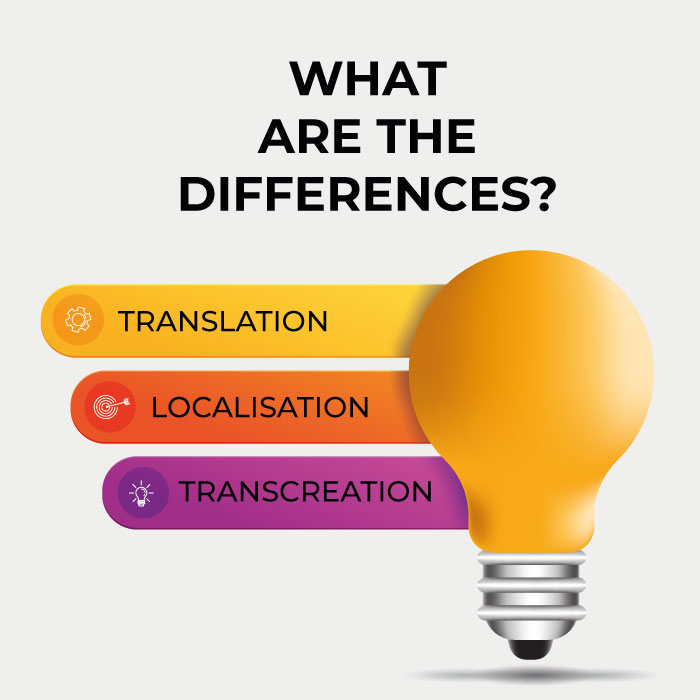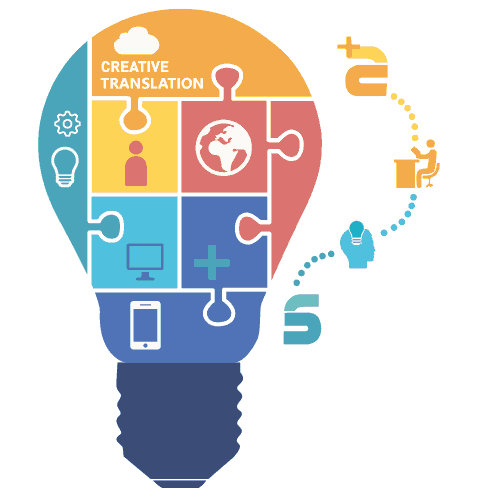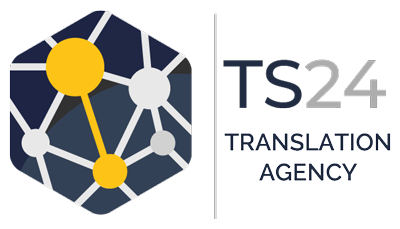Translation and Transcreation – What’s the difference between them?
Businesses should consider targeting an international audience. Not only does it help boost brand awareness, but it enables businesses to grow website traffic and reach a specific sales target.
As enticing as it may sound, doing business worldwide is a tough row to hoe. More than your one-size-fits-all marketing strategy is needed to thrive in the competitive business world.
Fortunately, a translation, localisation, or transcreation service helps launch businesses aboard and resonate with your ideal audience. This, however, raises another question, “Should you go for a translation service, a localisation service, or a transcreation?”
TS24 prepared an expert guide to help you identify the right service to cater to your business needs. We’ll take a closer look and explain the key differences between professional translation, localisation and transcreation services.
What Is Transcreation?
Transcreation takes translation and localisation to the next level. It entails taking the message of one language and producing text to create an emotional effect and meaning in the new language.
It is a type of creative rewriting crucial for texts meant to persuade the target audience – as in marketing – or wherever subtleties are vital.
Transcreators are highly creative, skilled writers who know the art of producing high-quality text.
The aim is to craft a text that feels like it was originally written in the second or third (target) language. In other words, the goal is to make it resonate with the target audience.
What Are Translation Services?
Expert translation services is the process of communicating the meaning of one language to another, so that a message can be easily understood in different countries. The former is called the source language, while the latter is referred to as the target language in the translation industry.
The history of translations is as old as the hills. Formerly, the concept was restricted to the world of philosophers and scholars. Today, the global language service is forecasted to encounter staggering growth with no signs of slowing down.
The skilled and tech-savvy translators today are linguistic professionals. Besides the command of their native language (L1), they’re well-versed in one (non-native or second language L2) or multiple languages (L3 or third language).
Experts translators typically translate text from the second (L2) or third (L3) language into their native language (L1). Their everyday responsibilities may include translating legal, marketing, or medical documents.
Also, they may work on a content management system to translate content for websites.
Professional translation service companies only work with highly-skilled and knowledgeable translators who dig into a language’s contextual and cultural backgrounds and bring them to life through translated text.
They have an in-depth understanding of the second and third languages besides proficiency in their native language (L1).
The primary purpose of choosing quality translation services is to generate a translation closest to the original text while retaining its syntax, grammar, and meaning.
What Is Localisation?
Localisation takes the fundamental translation a step beyond. The primary difference is that besides conveying the message of the source language, it adapts the content to fit the cultural context of the target audience.
Localisation services consider audience preferences and market subtleties at each step. For instance, it considers the consumer traditions, values, and norms to keep the content as relatable as possible.
Say a translator wants to convert US English to UK English for a British client. They’ll primarily consider the vocabulary and spelling in language-based localisation. Here’s what else language localisation will entail.
- The modification of cultural references to make them appropriate for the British audience
- Using punctuation that aligns with the language rules of the target audience
- Picking words that have identical connotative meanings
- Changing currencies and measurements in the target language.
One primary difference between translation and localisation is that the latter extends beyond language. For instance, it also considers design, multimedia, and more.
Images: Our brains process images faster than text – because that’s how powerful they are. Therefore, there’s no room for error when selecting the right images for your brochure, website, and email marketing campaign. A quick review from a localised professional can help ensure you use the right pictures.
Colour: You must know how your target customers perceive your brand’s colour. Every country associates a specific colour with something. What does your target audience feel about a particular colour?
For instance, the global advertising industry has long used the colour purple. French associate it with peace or freedom. Japanese, on the other hand, associate it with wealth. Further, Chinese, Americans, and British take purple as a symbol of loyalty. Finally, India identifies it as a colour of sorrow.
A localisation service helps identify and pick the right colour and visual to boost your brand and keep marketing relevant to the target customers.
However, because localisation is a complicated process, the translator must ideally be a native of the target country or have extensive experience in localisation.
Which One is best for you?
Since translation, localisation, and transcreation can significantly contribute to your business, you’ll naturally wonder which route to take.
Generally speaking, your ideal choice depends on your business goals and objectives and the type of document you want to translate.
For instance, if your content is highly technical (tech-based, scientific, or medical) and you plan to translate it for informational purposes, translation might suit you best.
However, localised marketing is the way to go if you plan to inspire and persuade your customers. Wondering why?
Studies show that 75% of consumers prefer purchasing products when they see information in their own language. Another stat reveals that 85% of localised market campaigns outperform English-only campaigns.
Likewise, transcreation is your ultimate weapon if you want to evoke emotions in your target audience. The more your customers can resonate with a text, the more effective your international marketing campaign is.
Fortunately, TS24 is the UK’s premium agency offering all types of translation services, so call +44 208 677 3775 to speak with our expert. Our advise is always free and we can help you in determining which particular service will be best in your situation.
Conclusion
While translation helps sustain your business, you may want to invest in localisation or transcreation service for successful international campaigns.
How you plan to market your business directly impacts your reputation and revenue.
Fortunately, transcreation and localisation keep you from creating unintentional misunderstandings and errors. In fact, they complement your international marketing campaign and help you take your business to new heights.
Whichever route you take, ensure to pick the right translation, transcreation, or localisation service to make the most of your investment.



